
temporary installation at fine art complex 1101, tempe, az
stained wood, rusted mason jars and concrete, 2015
"Thus, when Koehn brings together a piece like Eventually, everything will collapse, she is not only referring to the bell jars that have fallen to the floor in the galley space, or the unstable supports which have been fixed precariously to the wall. And she is not just referring to the admixture of concrete and earthen elements that are held together in the jars, which are a defining motif throughout her work and an obvious allusion to the conflict between nature and culture. And Koehn is not simply referring to the dichotomies of display and situation, preservation and loss, systems of containment and entropic collapse, even though these are the dynamic themes that circumscribe her entire oeuvre. While all of this is something that even the casual art patron can appreciate, the hard pill to swallow here is that Koehn is offering up a critique of western civilization as it has fomented what is now referred to as the sixth great period of mass extinction. In other words, Eventually, everything will collapse is about the fact that we can no longer preserve the conflict between nature and culture, and it is presented in the form of pickled contents that stand-in for the inability to stock up rations in a survivalist manner. From Koehn's perspective there is no weathering this storm, because the change in the weather is the problem, and not the storm per say. As such, Koehn's critique can be seen to be totalizing, or, if that term makes a certian reactionary portion of the fine art world uncomfortable, than one could just as easily say that Koehn is engaged in critical practices of ‘cognitive mapping’, following the definition of the term given by Fredrick Jameson, which is simply that of creating critical cartographies of concerns about our world, however large in scale or limited in scope they may be."






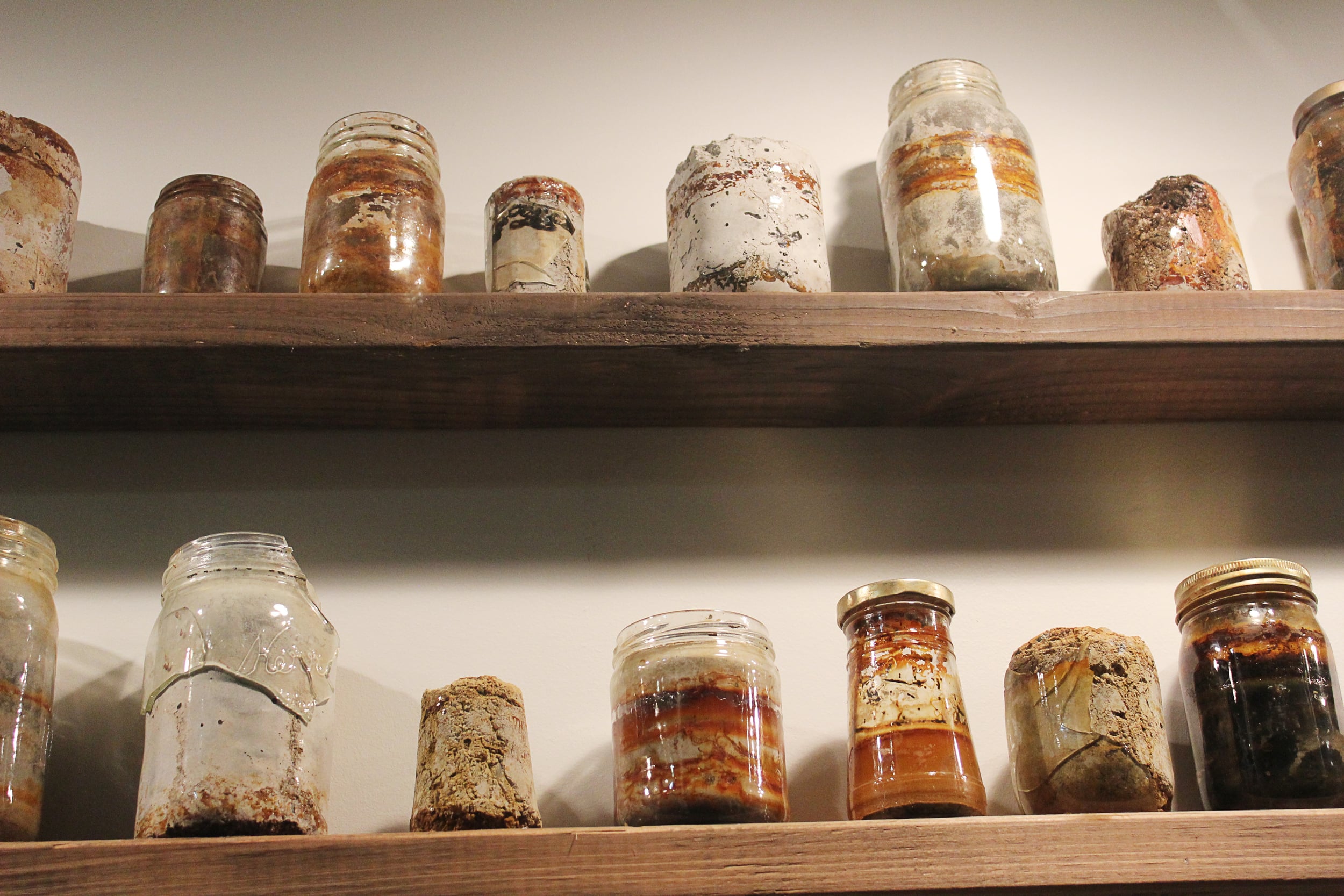
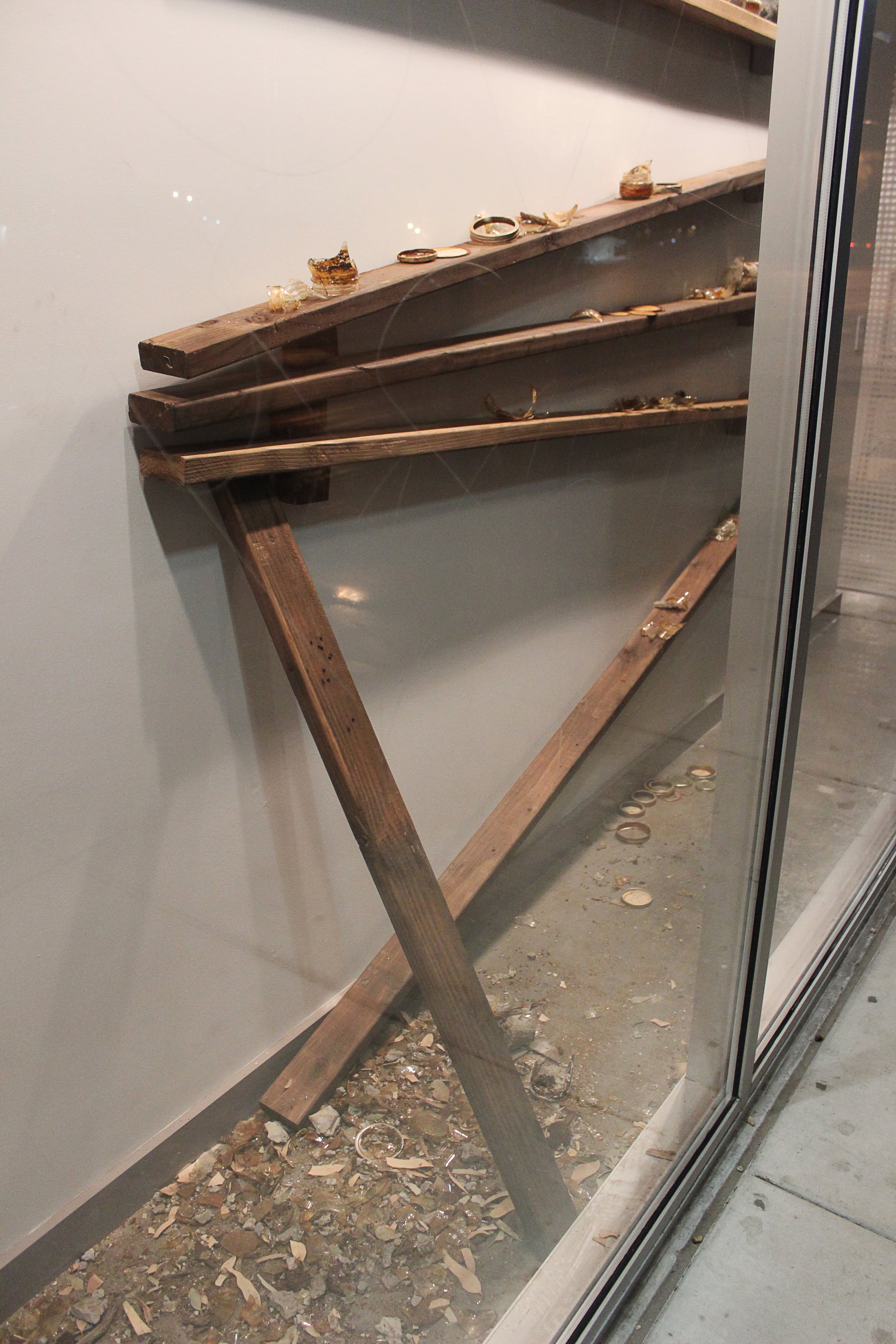
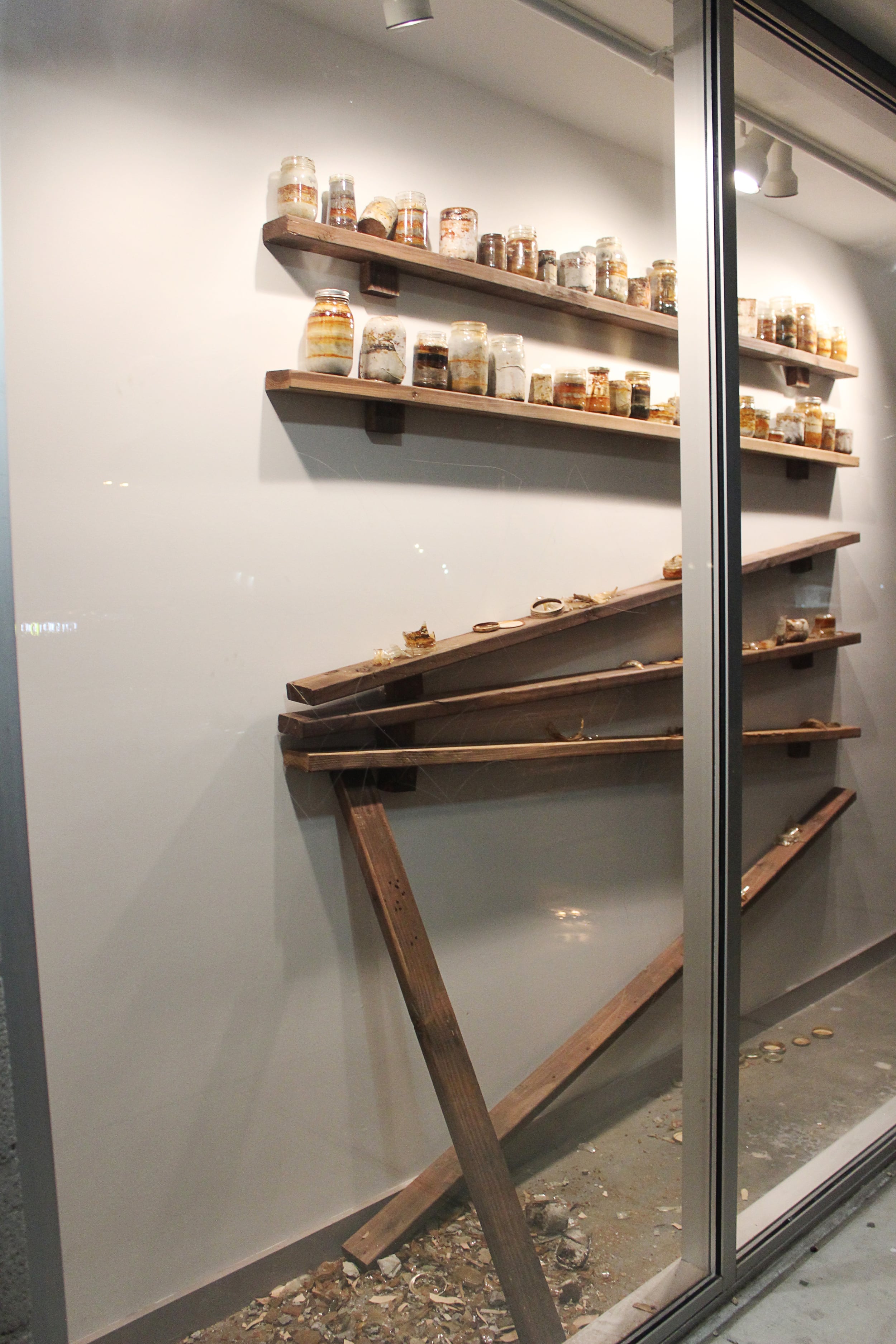
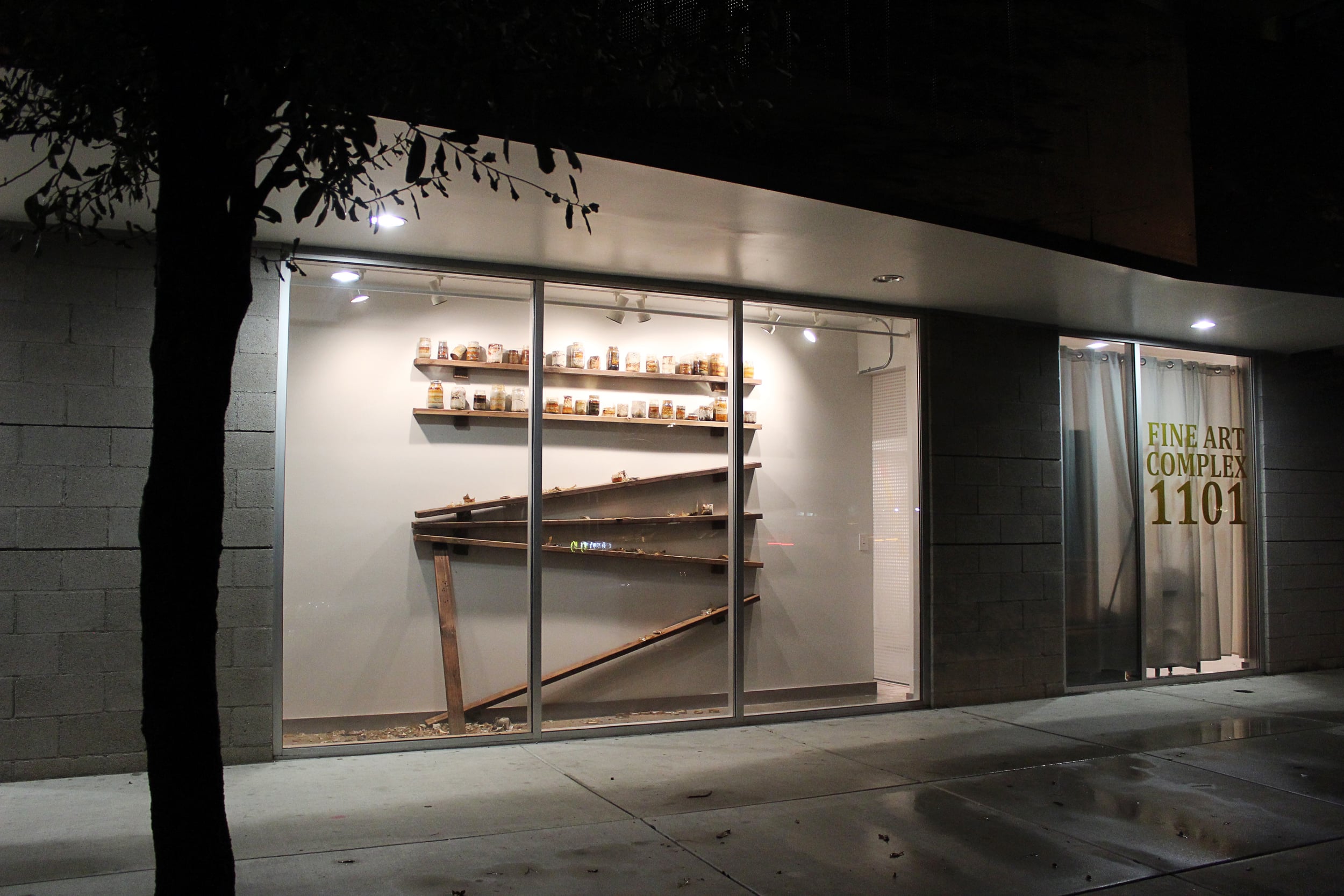
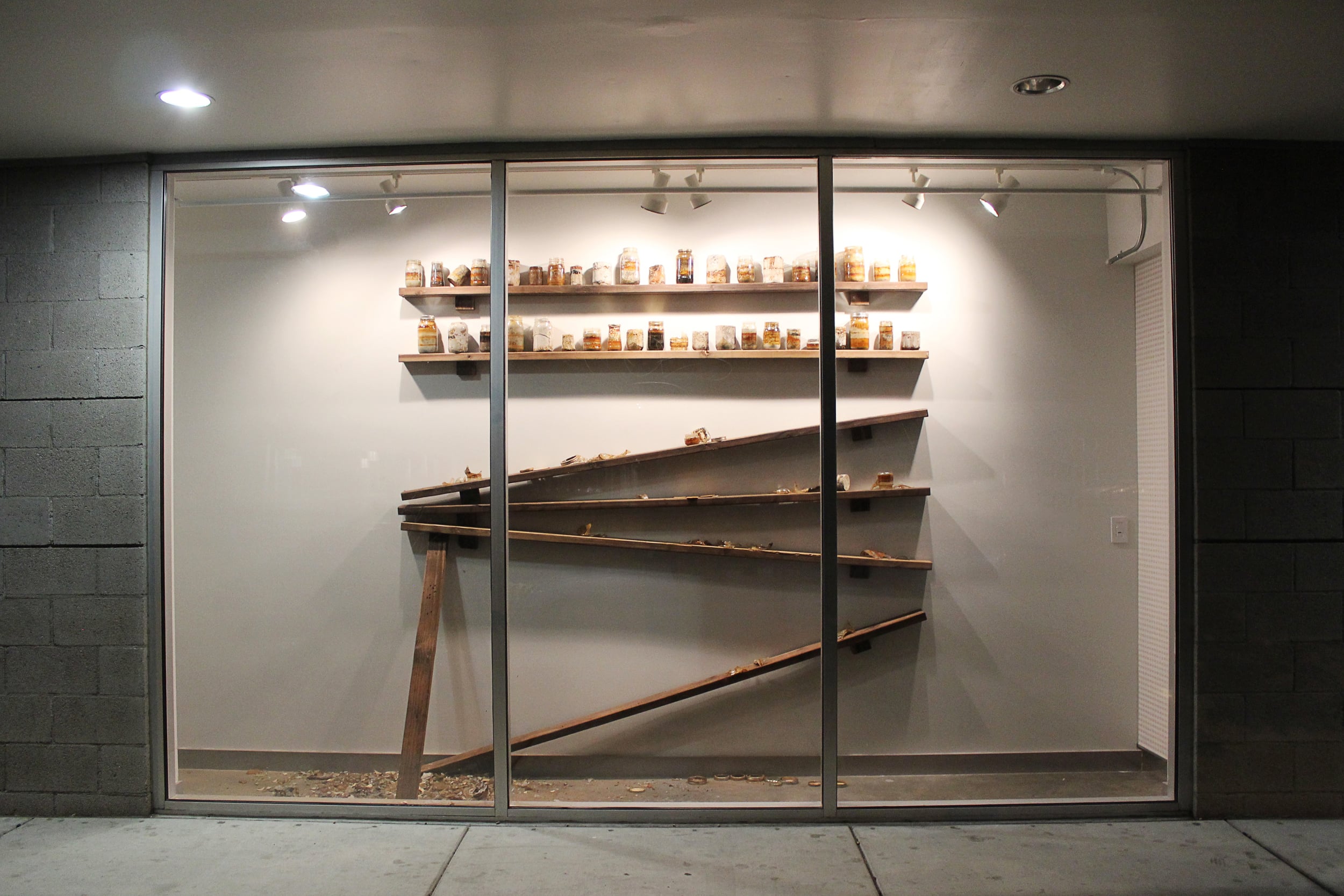
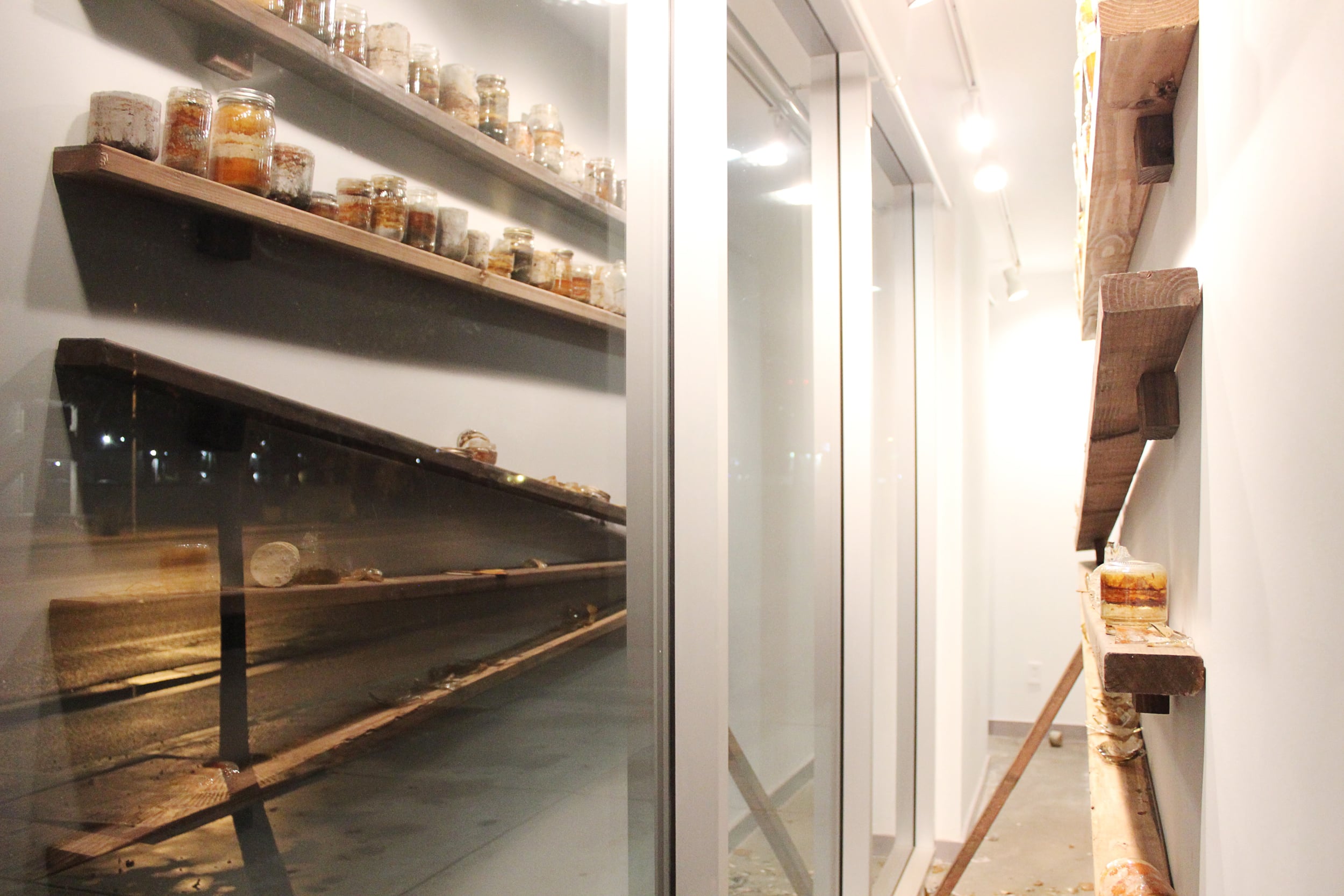

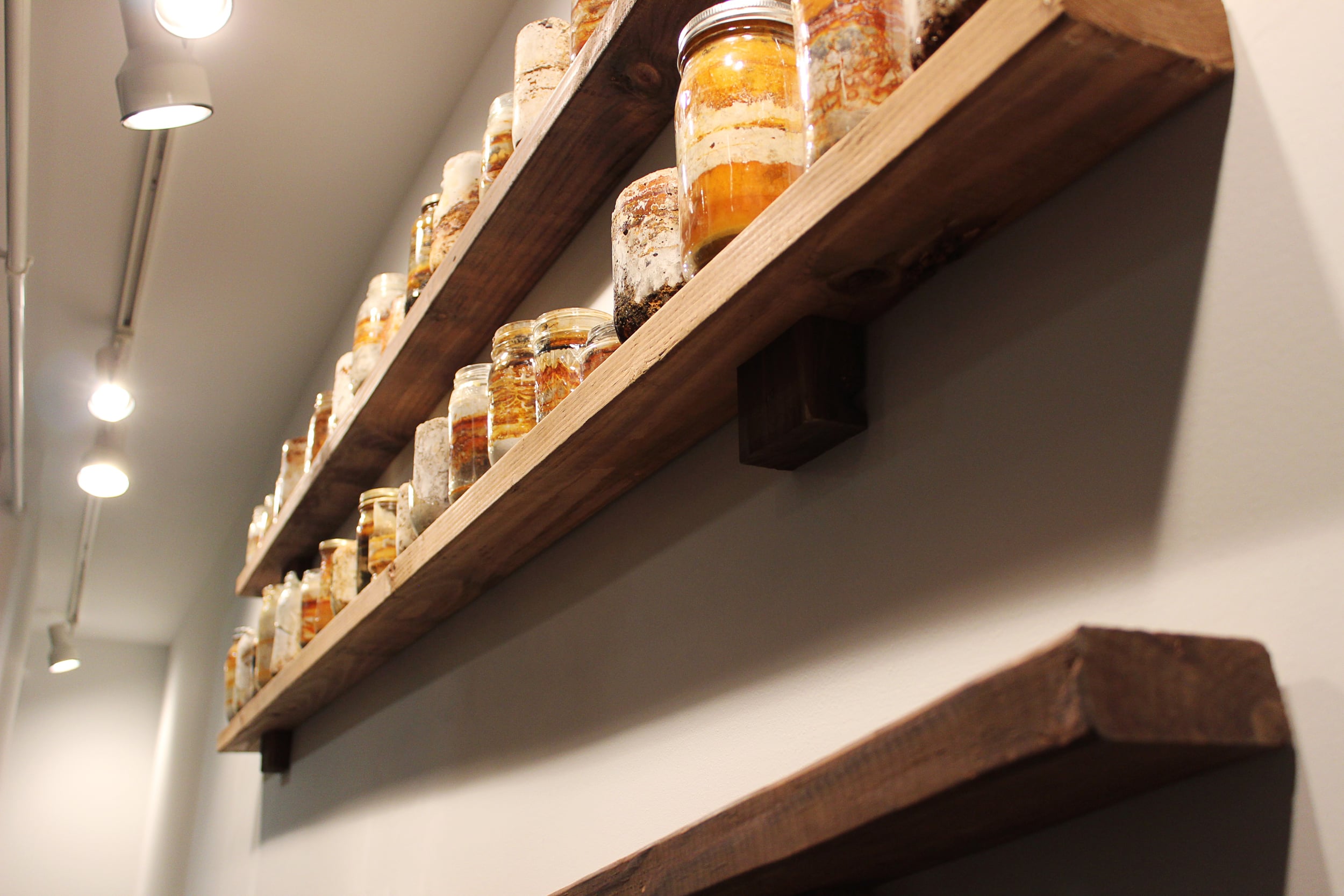

















temporary installation at fine art complex 1101, tempe, az
stained wood, rusted mason jars and concrete, 2015
"Thus, when Koehn brings together a piece like Eventually, everything will collapse, she is not only referring to the bell jars that have fallen to the floor in the galley space, or the unstable supports which have been fixed precariously to the wall. And she is not just referring to the admixture of concrete and earthen elements that are held together in the jars, which are a defining motif throughout her work and an obvious allusion to the conflict between nature and culture. And Koehn is not simply referring to the dichotomies of display and situation, preservation and loss, systems of containment and entropic collapse, even though these are the dynamic themes that circumscribe her entire oeuvre. While all of this is something that even the casual art patron can appreciate, the hard pill to swallow here is that Koehn is offering up a critique of western civilization as it has fomented what is now referred to as the sixth great period of mass extinction. In other words, Eventually, everything will collapse is about the fact that we can no longer preserve the conflict between nature and culture, and it is presented in the form of pickled contents that stand-in for the inability to stock up rations in a survivalist manner. From Koehn's perspective there is no weathering this storm, because the change in the weather is the problem, and not the storm per say. As such, Koehn's critique can be seen to be totalizing, or, if that term makes a certian reactionary portion of the fine art world uncomfortable, than one could just as easily say that Koehn is engaged in critical practices of ‘cognitive mapping’, following the definition of the term given by Fredrick Jameson, which is simply that of creating critical cartographies of concerns about our world, however large in scale or limited in scope they may be."